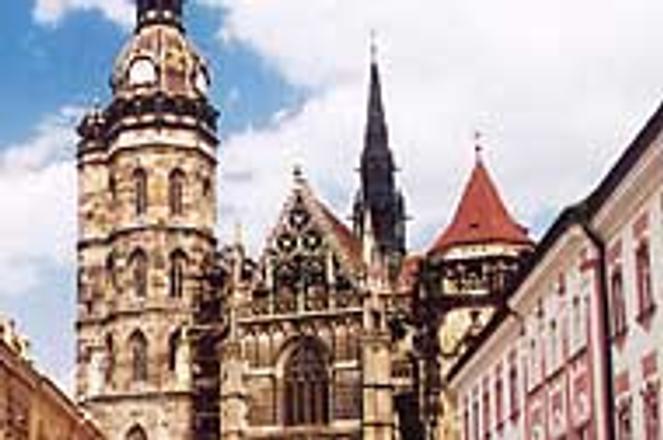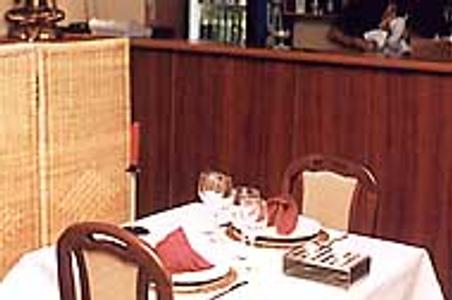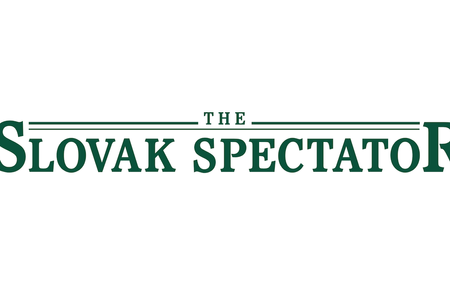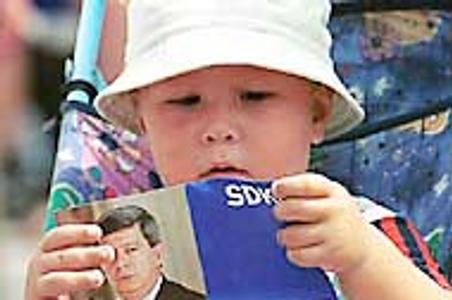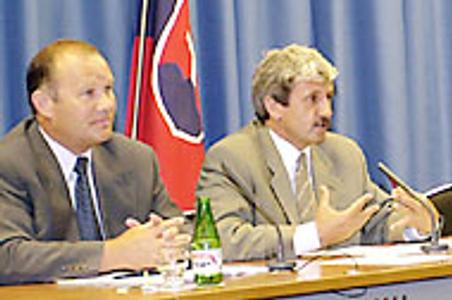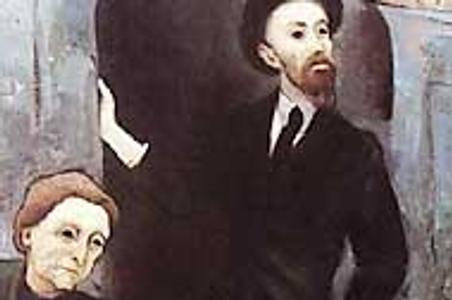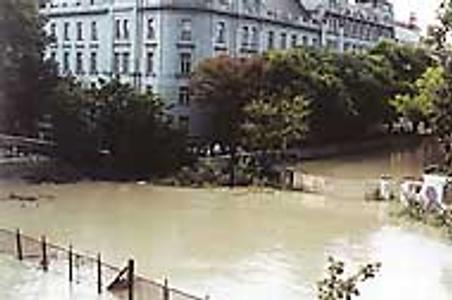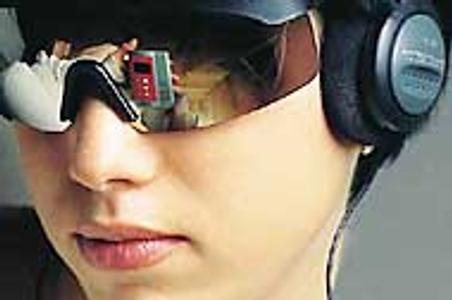Archive of articles - August 2002, page 6
If you desire to read an old article, use the search bar or select the publication date.
Košice region isthe kingdom of underground beauties
THE SPRAWLING ruins of Spiš castle, the towering High Tatra mountains and the grandiose St. Elizabeth's gothic cathedral may be the country's most visited destinations, but the dripstone caves of Slovakia's south-east have all the makings of an equally spectacular tourist treasure.Of the 3,850 known caves in Slovakia, the most beautiful lie in the limestone areas of a region governed by the country's second largest city, Košice. For their unique qualities, these 'Slovenský Kras' karst caves (karst is landscape underlain by limestone) together with Hungary's Aggtelek underground cave system were included on the list of Unesco World Heritage sites in 1995. Dobšinská ice cave in Slovenský raj (Slovak Paradise) joined them five years later, in 2000.
Review: Maharadža restaurant charming but slow
If an Indian restaurant in a non-Indian city doesn't call itself the Taj Mahal, it often plumps for Maharaja (in the same way Irish theme pubs call themselves either the Dubliner or the James Joyce). Bratislava's newest Maharadža, an Indian-Bengali restaurant perched above the castle, having picked the name, now faces the daunting task of introducing ever-suspicious Slovaks to the delights of Indian cuisine.As is traditional in Indian cuisine, the menu does not offer any pork or beef dishes, but this is no disappointment in pork-happy Slovakia. The combination of chicken, mutton, lamb, shrimp, salmon, carp and vegetarian meals with six or seven different sauces add up to a very satisfactory selection.
Countrywide Events
BRATISLAVAWESTERN SLOVAKIACENTRAL SLOVAKIA EASTERN SLOVAKIA
Teachers complain of history textbook deficit
AS SLOVAK schools gear up for the first academic year under new regional parliaments, deep problems remain in the Dzurinda government's drive to devolve state power over education. Besides crippling debt, many schools say they face possible default on utility bills, and even lack basic teaching materials and texts.Debt in the education system reached Sk763 million ($17 million) at the end of July, surprising Education Ministry officials who had counted on a maximum debt of Sk400 million. Regional parliaments insist the government cover the debt before handing schools over to their administration.The financial difficulties may again affect schools' abilities to cover payments for heat this winter, possibly leading to a repeat of shutdowns and extended Christmas holidays that some schools have used in recent years to save on gas costs.
Who is the SDKÚ: Experienced politicians offering "nothing above-standard"
THE RULING SLOVAK Democratic and Christian Union party offers a candidates list brimming with political veterans, but given the public's distaste for its current and past leaders, that apparent advantage may even work against it in September elections, according to a political analyst.Nor has the Democratic and Christian Union (SDKÚ) project fulfilled its founders' main aims in launching the party in 2000 - to unite Slovakia's right-wing forces under a major political label and do away with smaller parties described by Prime Minister Mikuláš Dzurinda as "discussion clubs" for their members.The SDKÚ party is running at between seven and eight per cent voter support, at times behind five other parties and far from the 20 per cent the party set out to capture.
What to do and where to go in Košice region
With the holidays already here, this section may help you to plan trips on free days to explore natural beauties, visit cultural events or just learn more about Slovakia
Cabinet: After four years, country in better shape
SLOVAKIA's cabinet is happy with its performance over the last four years but admits that several key targets it set itself in its 1998 were missed, either because of the breadth of the wide-spectrum five party ruling coalition, or because some goals were simply unrealistic.At an August 7 press conference cabinet officials said the government had achieved as much as realistically could have been expected since being elected almost four years ago, but acknowledged their failure to contain a nearly 20 per cent national unemployment rate or launch crucial health care, welfare and pension reforms.Deputy Prime Minister for Economy Ivan Mikloš said the current cabinet had taken over administration of a state that was in "serious economic crisis" and "internationally isolated" resulting from the policies of the previous Vladimír Mečiar cabinet.
Pavol Hrušovský: KDH target of "attempts to discredit"
THE FOYER of Pavol Hrušovský's office with the Christian Democrats leaves little doubt about the political party's roots. A small cross hangs over the door, a wooden bust of the Virgin Mary on one wall, a portait of a bearded Christ and a nationalist Christian calendar on another.Hrušovský, 50, took over the leadership of the ruling coalition Christian Democrats party (KDH) in 2000, after the party had spent a decade under former dissident Ján Čarnogurský. The quiet-spoken lawyer has healed a break in the party between its more conservative forces and a wing leaning to merger with Prime Minister Mikuláš Dzurinda's SDKÚ party, and has returned the KDH to some of its more traditional positions - anti-abortion, pro-Slovak, law and order.
Slovak surrealist resurrected
THE UNIQUE talent of Slovakia's first, and possibly last, surrealist is the focus of a two-month exhibition at the Košice-based Východoslovenská Gallery. As visitors quickly discover, Imro Weiner-Kráľ, an artist, painter and graphic designer, apparently has no parallel in Slovak art.Weiner-Kráľ came from a poor business family. Born in western Slovakia's Považská Bystrica in 1901, he is considered the most important personality in Slovakia's Modernist movement between the first and second world wars.While many other Slovak artists at the time focused on village and pastoral settings, Weiner-Kráľ's creations were dominated by Jewish and urban themes, a choice that art historians have theorised was heavily influenced by his upbringing.
Never again, and other vain promises
"I AM never coming here again." These words, without fail, end every visit from my American boyfriend. It's not that we are having problems in our relationship. Rather, his proclamation is based on the over consumption of a certain clear coloured home-brew that is regularly forced down his throat by every hospitable Slovak I know.Our Slovak adventure began roughly two years ago when, after a few tearful goodbyes, I boarded a plane in Washington DC, preparing to spend the next two years in this small central European country. As we took off I clutched my information book tightly, glancing at the cover photo of a wizened old babka with a scarf tied around her head, standing in the midst of her potato field. Not knowing much about my future home other than the fact that it had once been part of Czechoslovakia and that the language was, based on the cassette I had been sent, utterly impossible to pronounce, I took this book at face value. I assumed I was going into some kind of traditional backwater, in which the women would be too modest to leave the house without 7/8 of their bodies covered in thick garments and my diet would consist of potatoes and little else.
Capital braces for flood waters
THE SUN came out for several hours in the Slovak capital August 15, but Bratislava remained under a flood alert following a week of rain and the highest water levels in the Danube river the city has seen for over a century.Firefighters, soldiers, police and transport officials worked steadily to protect the city from the extent of flooding that has devastated Germany and the neighbouring Czech Republic and Austria.Hundreds of locals and curious tourists watched the river spill over the banks of the Danube and inundate low-lying areas around the university, the harbour and near the Petržalka suburb. The depth of water in the Danube reached 932 centimetres August 15, about three times its normal level, and was expected to rise over 10 metres in Bratislava before starting to recede on Friday.
Brain-wave English courses cash in on language hunger
PETER Bujna spent two weeks in May learning English in a somewhat novel manner - playing games and relaxing with a pair of small earphones. Although he may have appeared idle, his language instructors told him that the manipulation of his brain wave pattern through the headphones had allowed them to transfer foreign language knowledge directly into his subconscious."After I returned from this two-week course, I didn't remember anything," protested Bujna, a pharmacist from the eastern Slovak village of Prakovce.The opening of Slovakia to the western world after the 1989 collapse of communism led to a steep growth in demand for foreign language instruction among people of all ages and backgrounds, say education professionals, with the gaps left by the official education system often being filled by proliferating private agencies and language schools.
- Filling the English-language gap on Slovak literature
- Get a glimpse of Bratislava’s eastern hinterland by bike Photo
- Meet the boy who makes Zvolen drivers honk their horns in recognition
- Light the Slovak fire
- Atlético’s first Slovak? History points to the forgotten Daučík
- News digest: The book aiming to open an English-language window onto Slovak literature
- Slovak roots: an opportunity to get closer
- Formed 15 years ago, unique island on Hron becomes haven for active leisure Photo
- Filling the English-language gap on Slovak literature
- Get a glimpse of Bratislava’s eastern hinterland by bike Photo
- News digest: The book aiming to open an English-language window onto Slovak literature
- Meet the boy who makes Zvolen drivers honk their horns in recognition
- Light the Slovak fire
- Weekend: Metal music or folklore festivals. What will it be? Photo
- Atlético’s first Slovak? History points to the forgotten Daučík
- German rail logistics group pulls plug on Slovak freight arm Retrack
- Get a glimpse of Bratislava’s eastern hinterland by bike Photo
- Weekend: Metal music or folklore festivals. What will it be? Photo
- Light the Slovak fire
- Filling the English-language gap on Slovak literature
- Top 10 events in Bratislava for foreigners
- News digest: President calls out British “help” and dares UK with “what‑if”
- 3 free things to do in Bratislava in the next seven days
- Crumbs of history: How two biscuits became Slovak legends
- From nursing aspirations to HR leader: How Miroslava Rychtárechová is shaping Tesco Slovakia
- Why Slovakia’s SNP Trail should be on your hiking bucket list Audio
- They were close, but pursuing Slovak citizenship has brought them closer
- Get a glimpse of Bratislava’s eastern hinterland by bike Photo
- Weekend: Metal music or folklore festivals. What will it be? Photo
- Fico accuses UK of election meddling, summons British ambassador
- Light the Slovak fire
- In this theatre, watching is only the beginning
- News digest: The book aiming to open an English-language window onto Slovak literature
- Slovak finance body revives corporate bond scoring, but major players stay away
- Smer party linked to pro-Russian disinformation media outlet TV OTV
- Meet the boy who makes Zvolen drivers honk their horns in recognition
- Weekend: Metal music or folklore festivals. What will it be? Photo
- Filling the English-language gap on Slovak literature
- ‘Caravan project’ raises questions over farm subsidy scheme
- German rail logistics group pulls plug on Slovak freight arm Retrack More articles ›

